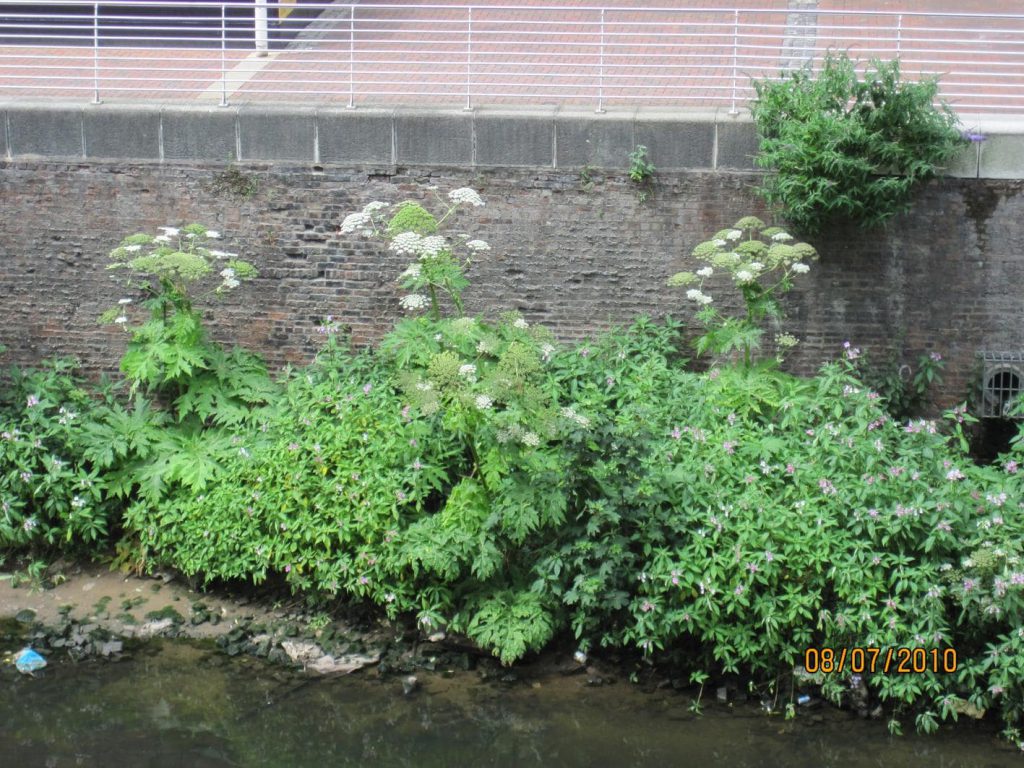
I’ve just returned from an invasive weed fact-finding mission in Hamburg, (which I managed to combine with my stag do). I really enjoyed Germany – the people were friendly, and it wasn’t what I expected.
My memory of certain parts of the weekend may be a little hazy, but I distinctly remember spotting significant amounts of Japanese Knotweed over there, especially along train tracks. Fortunately I wasn’t tied to them at the time!
Japanese knotweed is especially good at propagating down corridors such as rivers, highways and train lines, because (in theory, at least) it’s possible for any living part of the plant to re-grow if it’s detached and then finds somewhere to grow. River floods carry viable material downstream, and trains and cars can detach bits of stem at high speeds, flinging them to new homes further down the road.
Himalayan balsam and Giant hogweed on a riverbank in Manchester. Photo: M. Clough
Although the main method of propagation for the knotweed in the UK is human activity – fly tipping, improper disposal of contaminated waste and cross-contamination by gardening equipment and other plant, these corridors still represent excellent windows of opportunity for Japanese knotweed to go on a little journey of its own.
What goes on tour, stays on tour – unless it’s Japanese knotweed; it seems that that will find a way to catch up with you wherever you go!
Dan M
